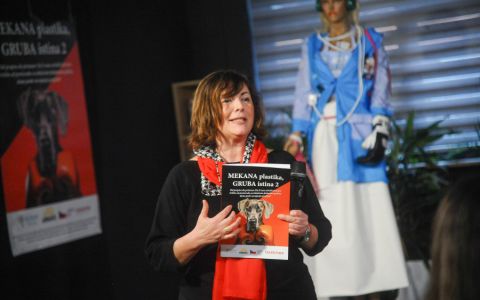Arnika has conducted a research study focused on mercury in fish and hair in the Czech capital, Prague. This article is a summary of the results of this research, which found high levels of mercury, mainly in fish sold at markets and in fish shops. A full report is available in the Czech language only on our Czech website, and more information is also available in a press release.
Mercury has become a substance of global importance as a result of its ability to be transported over long-distances, its persistence in the environment, and its bioaccumulation and toxicity. The main goal of this study is to interpret the data set obtained from environmental sampling in Prague which was conducted between August and October 2019. The fish and human hair samples that were collected were analysed for their mercury content and the results obtained were further compared with national and international limits or reference values. The fish samples originated from the territory of the Czech capital city, Prague, while some of the samples of sea and freshwater fish were purchased in fish shops or convenience stores and other samples were caught in the Vltava or other water bodies. Samples of human hair were taken from persons of different ages and occupations who have been living in Prague for a long time. Chemical analyses to determine the total concentration of mercury in the samples of fish were performed at the State Veterinary Institute in Prague and those of human hair at the Health Institute (Zdravotní ústav) in Usti nad Labem.
The average concentration of mercury in the fish caught was 0.144 mg/kg fresh weight. The three samples of caught fish with the highest mercury content came from the Vltava. When the total mercury concentrations in samples of fish caught were compared with the EU legislative criteria, all the samples met the hygienic standard set for fish as a food. All the samples of caught fish were also below the maximum recommended concentrations for mercury of the US EPA. If a concentration of 0.22 mg/kg fresh fish weight is used as a reference value for total mercury, corresponding to the maximum recommended mercury intake during the consumption of one fish meal per week, the recommended value was exceeded in two fish samples.
The average concentration of mercury in fish purchased from shops was 0.118 mg/kg fresh weight. The higher total mercury content of the fish samples purchased in the shops on the territory of the capital city appeared in five samples. These were the species: swordfish, yellowfin tuna, and monkfish, all of which are marine and predatory fish. When the total mercury concentrations in the fish samples purchased from the shops are compared with the EU legislative criteria, one sample did not meet the food safety criteria. It was a sample of swordfish whose total mercury content was 1.117 mg/kg fresh weight; according to the European Commission Regulation, the maximum permitted concentration of total mercury in predatory fish species is 1 mg/kg fresh weight. If samples of fish from the shops are compared with the maximum recommended values for consumption used in fish consumption advisories in the USA, it would not only be the swordfish sample that failed to meet the criteria. If a concentration of 0.22 mg/kg of fresh fish weight, which corresponds to the maximum tolerable intake of mercury in the weekly consumption of fish, was used as a reference value for total mercury, the recommended value would be exceeded in five fish samples out of a total of 28.
The average mercury concentration in the human hair samples was 0.238 mg/kg. The results of mercury concentration in the hair of people living in the capital city, Prague, were compared with the recommendations of the US EPA, a reference value for women of childbearing potential and a reference value that may be associated with adverse health effects. All the hair samples taken from people living in the capital city, Prague, were below both the US EPA mercury limits.
There are several important sources of mercury in the capital. Dispersions include the use of mercury in dental surgeries, obsolete medical devices, domestic coal combustion, the use of sewage sludge on fields or the surface of a terrain, and the presence of mercury in waste and consumer goods. The large point sources of mercury include three plants: the cement plant of the company Českomoravský cement, a.s. in Radotín, the Malešice municipal waste incinerator, and the Central Waste Water Treatment Plant in Prague. The largest source of mercury in air emissions in the Czech Republic is the burning of brown coal in electricity generation and local heating.







